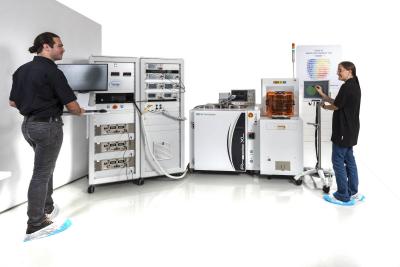Researchers in Japan developed a high-speed SOT-MRAM memory cell compatible with 300mm Si CMOS technology
Researchers at Tohoku University demonstrated a high-speed spin-orbit-torque MRAM (SOT-MRAM) memory cell compatible with 300 mm Si CMOS technology.
The SOT device achieved high-speed switching (down to 0.35 ns) and a high thermal stability factor (E/kBT 70) which the researchers say is sufficient for high speed non-volatile memory applications. The device can withstand annealing at 400°C. The researchers used these devices to create a complete SOT-MRAM memory cell.





